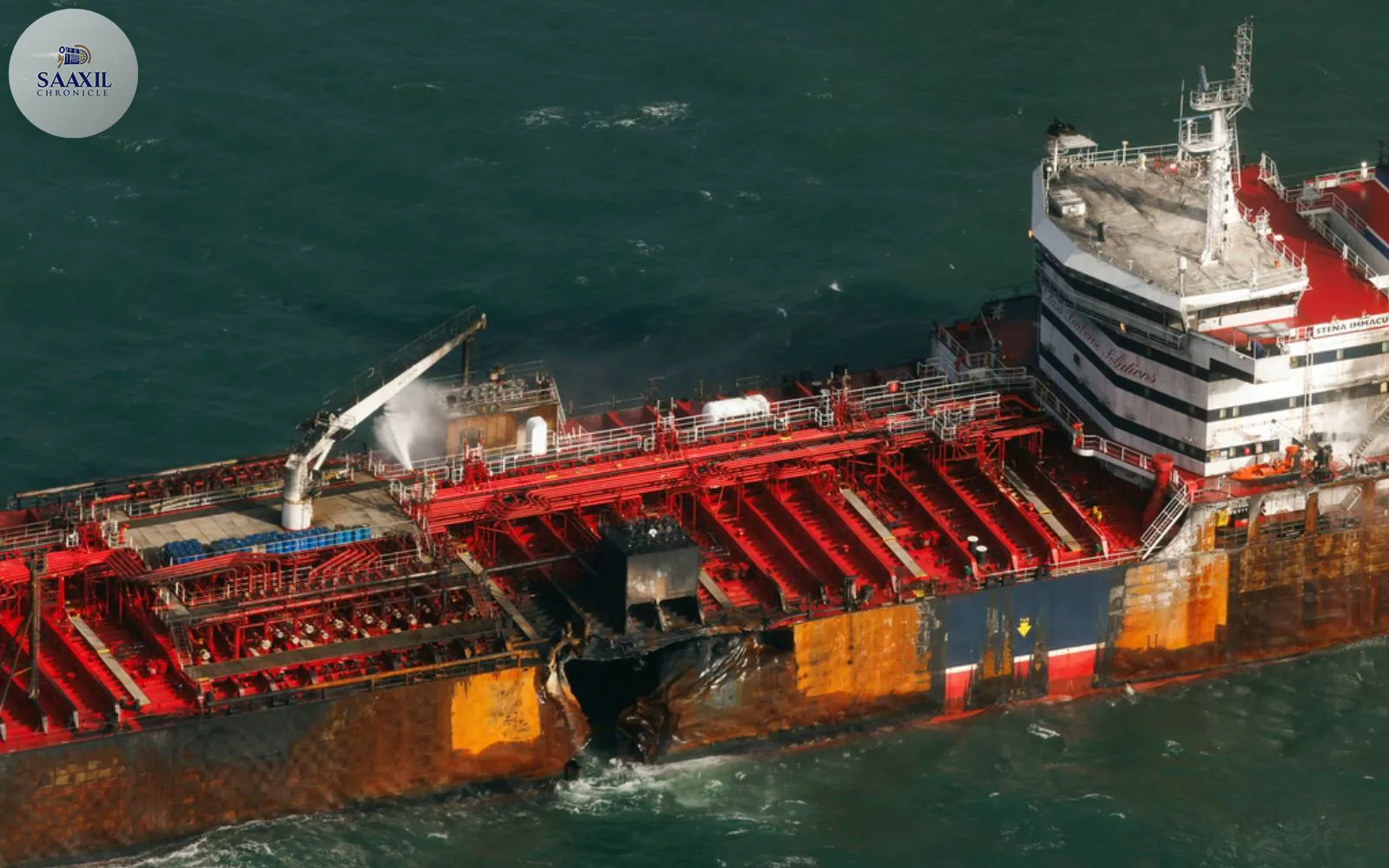A new report highlights a critical oversight as two vessels collided off the coast of East Yorkshire in March. The Stena Immaculate, a chemical tanker, was struck by the Solong cargo ship on 10 March, resulting in significant damage but no injuries. The investigation reveals that neither ship had designated lookouts at the time of the incident, a violation of maritime safety regulations.
Collision Details and Immediate Aftermath
The collision occurred in the early hours near the Humber Estuary, an area known for its heavy maritime traffic. The Stena Immaculate, en route to Rotterdam, was carrying a full load of chemicals, while the Solong was heading to the port of Hull with general cargo. Both vessels sustained substantial damage, but fortunately, there were no reported spills or injuries.
The UK Marine Accident Investigation Branch (MAIB) immediately launched an inquiry to understand the circumstances leading to the crash. Preliminary findings indicate that both ships failed to maintain proper watchkeeping standards, a fundamental requirement under the International Regulations for Preventing Collisions at Sea (COLREGs).

Failure to Maintain Lookouts
The investigation focused on the absence of lookouts on both vessels. According to maritime regulations, ships are required to have designated personnel to maintain a continuous watch, especially in congested shipping lanes. This oversight is believed to have contributed significantly to the collision.
Captain John Davies, a maritime safety expert, commented, “The absence of lookouts is a serious breach of safety protocols. In busy waters like the Humber Estuary, maintaining a vigilant watch is crucial to prevent accidents.”
The report also noted that the ships were operating under minimal crew conditions, a common practice in the shipping industry to cut costs. However, this often leads to crew fatigue and inadequate staffing, increasing the risk of accidents.
Industry Implications and Safety Concerns
The incident has raised broader concerns about safety practices in the shipping industry. The MAIB report calls for stricter enforcement of watchkeeping regulations and better training for crew members. It also highlights the need for shipping companies to prioritise safety over cost-cutting measures.
Maritime unions have expressed concern over the findings, urging shipping companies to adhere strictly to safety standards. “The safety of our seas depends on rigorous adherence to international regulations,” said Sarah Thompson, a representative of the International Transport Workers’ Federation. “We need to ensure that all ships are adequately staffed to prevent such incidents.”
Technological Solutions and Future Prevention
In light of this incident, experts are advocating for technological advancements to enhance maritime safety. Automated systems and advanced radar technology can assist in monitoring shipping lanes and alerting crews to potential collisions. However, these technologies should complement, not replace, human vigilance.
The shipping industry is also urged to invest in crew training and development to ensure that all personnel are well-versed in safety protocols and emergency procedures. Continuous education and simulations can help crews respond more effectively to potential hazards.
Looking Ahead: Strengthening Maritime Safety
The collision between the Stena Immaculate and the Solong serves as a stark reminder of the critical importance of maritime safety regulations. The MAIB’s findings underscore the need for comprehensive safety measures and a culture of vigilance within the shipping industry.
As the investigation concludes, it is expected that new guidelines will be implemented to prevent similar incidents in the future. The focus will likely be on enhancing crew training, enforcing strict watchkeeping standards, and leveraging technology to improve safety at sea.
The maritime community is urged to learn from this incident and work collaboratively to ensure safer seas for all. The lessons from East Yorkshire’s collision could pave the way for improved practices and heightened awareness across global shipping lanes.


